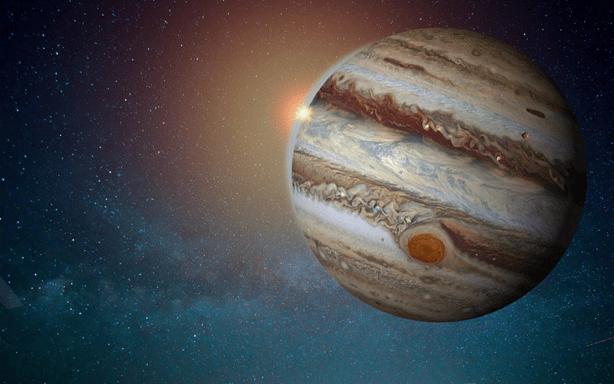waynethomasyorke.com – Jupiter, the fifth planet from the Sun, is the largest planet in our solar system. Its name comes from the Roman king of the gods, Jupiter, whose Greek counterpart is Zeus. Jupiter is often referred to as a gas giant because it is primarily composed of hydrogen and helium, with no solid surface. Here are some key facts and characteristics about Jupiter:
Size and Mass:
- Jupiter’s diameter is about 11 times that of Earth’s, and its mass is more than 300 times that of Earth.
- Despite its size, Jupiter completes an orbit around the Sun in about 12 Earth years.
Atmosphere:
- Jupiter’s atmosphere is made up mostly of hydrogen and helium, with traces of other gases such as methane, water vapor, ammonia, and ammonium hydrosulfide.
- The planet’s atmosphere is known for its turbulent weather patterns, including the Great Red Spot, a giant storm larger than Earth that has been raging for at least 400 years.
Moons:
- Jupiter has the most moons of any planet in our solar system, with 79 known moons as of my knowledge cutoff in 2023. The four largest moons, known as the Galilean moons—Io, Europa, Ganymede, and Callisto—were discovered by Galileo Galilei in 1610.
- Ganymede is the largest moon in the solar system, even bigger than the planet Mercury.
Rings:
- Jupiter has a faint ring system composed of dust and small particles. These rings are much less prominent than those of Saturn.
Magnetosphere:
- Jupiter has a strong magnetic field, the strongest of any planet in the solar system. This magnetosphere is so large that it would be visible from Earth if it could be seen with the naked eye.
Exploration:
- Jupiter has been visited by several spacecraft, including the Pioneer 10 and 11, Voyager 1 and 2, Ulysses, Cassini, and New Horizons. The Galileo spacecraft orbited Jupiter from 1995 to 2003, and the Juno mission, which entered orbit around Jupiter in 2016, is currently studying the planet in detail.
Scientific Interest:
- Jupiter’s moons, especially Europa and Ganymede, are of great interest to scientists because they may have subsurface oceans of liquid water, which could potentially harbor life.
- The planet’s extreme conditions also provide a natural laboratory for studying the physics of gases, liquids, and plasmas under high pressure.
Jupiter’s immense size and mass have a significant influence on the solar system. It acts as a gravitational vacuum cleaner, capturing or ejecting comets and asteroids that might otherwise hit the inner planets, including Earth. This protective role has led some scientists to speculate that Jupiter’s presence may have been crucial for the development of life on Earth.
